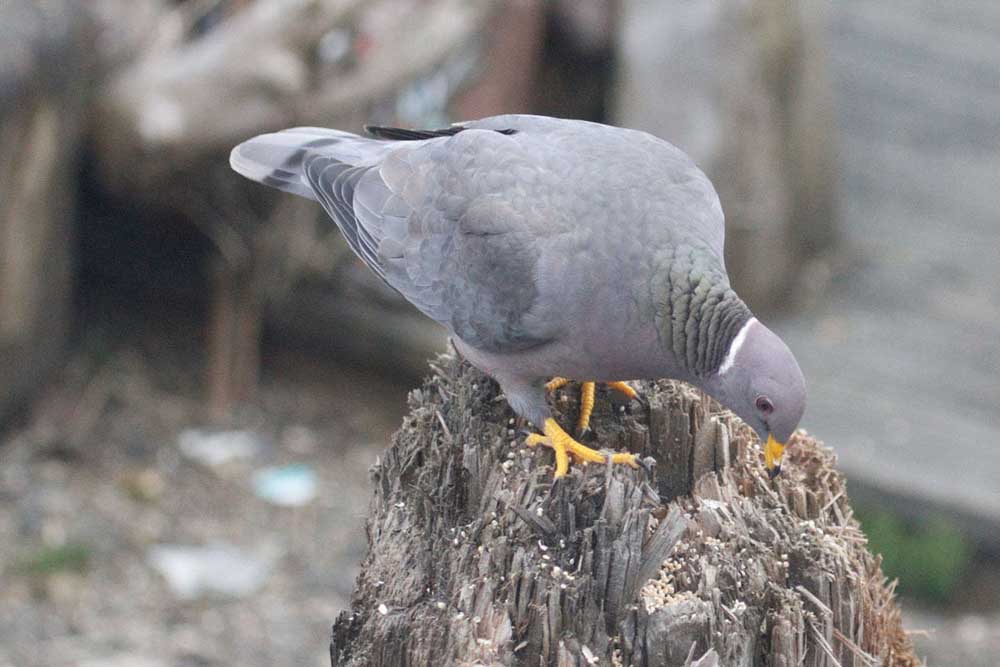Birdwatching Backwoods relative of the rock pigeon: The band-tailed pigeon
Published 10:45 am Tuesday, June 20, 2017

- Band-tails eat seeds from feeders like this stump.
Band-tailed pigeons are common in the forests of the Pacific Coast. The band-tailed is a sociable bird, and is therefore usually found in large flocks especially in mountain forests. Its breeding area is the wet forests from southern Alaska to southern California. This is but one of two distinct breeding populations. The other is located in the dry mountain woods in the southwest U.S. extending south into Mexico and South America.
Trending
The band-tailed is almost exclusively a vegetarian. Thus, its diet consists of wild and domestic fruits for the most part. It also feeds on grain seeds, acorns, pine nuts flowers of woody plants and insects on occasion. It will also visit feeders. It’s absolute favorite foods are raspberries, blackberries, cherries and elderberries. The young nestlings are not fed these delicacies, but instead are given “crop milk” which is a substance secreted from the lining of the adult’s esophagus. This is especially interesting because it means that the Band-tailed is not beholden to finding food for their youngsters, and this allows them to have as long a breeding season as they wish. In other words, band-tails are able to raise several broods.
The band-tailed pigeon is very similar to its rock pigeon relative. However, unlike the rock pigeon, which is an introduced species and wide spread in North America, the band-tailed is native to western North America. It tends to be seen in the upper canopy of the forest so it isn’t always easy to see. In addition, it is a very fast flier. So it is here, and then gone in a flash. On the ground, however, the band-tailed seems portly and a bit slow, but first impressions are not always accurate. In actual fact, the band-tailed pigeon is not fat, but is made of heavy muscle, which accounts for its ability to fly swiftly and often for long distances.
The field mark to watch for from below the canopy is its very long tail that shows a pale wide band at the end. Sometimes its black wing tips are also noticeable from below. In general, though, it wears a soft gray or gray-blue plumage with a crescent of white on its neck. It has a deep yellow bill with a black tip and yellow feet.
Trending
Scientists have observed that band-tailed pigeons continue to soar in the air during severe and fierce thunderstorms. They defy even the worst of storms. They tend not to seek shelter like other species.
There are band-tailed pigeons in town right now. Look for them in the wooded areas of the refuge and the Peninsula. Specifically, they are known to be at Leadbetter, Tarlatt, Long Beach and Ilwaco. They are a bit larger than a rock pigeon and smaller than an American crow. Look up and you may see one!









